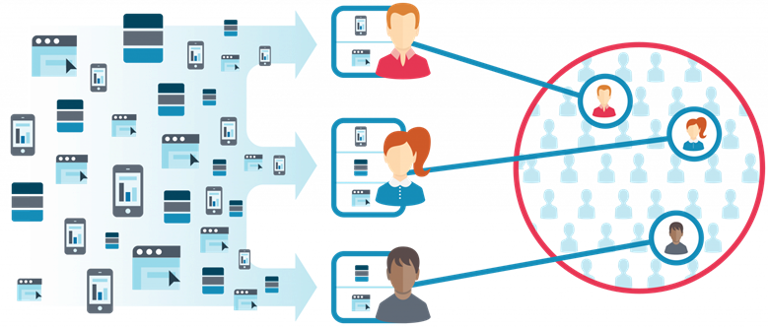Cross device tracking, enabling better connections between consumers and brands…
GrowthIn this sixth article in our Catapult series, our Head of Digital Marketing, Chris Laas, looks at the opportunities the demise of third-party cookies will have in connecting consumers with brands, across multiple devices.
Cookies have never been a perfect tool for marketers or for powering the AdTech world, as cookies are particularly bad in a world of cross-device tracking. Due to the demise of the third-party cookie among other issues, every major publisher and platform has been working on solutions using a combination of publisher first party data, signed in users and standardised universal IDs. This is good news, as a future without third-party cookies will lead to better transparency and attribution for the industry, as well as better privacy control for consumers.
Why are cookies bad for cross device tracking?
The first issue is that cookies are reset when a user closes a browser on a smartphone, tablet or other smart devices. Secondly, cookies can’t be passed from one device to another, or shared across browsers. The third issue is that third party cookies are completely anonymous. What we mean by this is that the platform that created the cookie, cannot actually determine who you are based on the ID generated from the device it is on.
A better solution: First party data, signed in users and standardised universal ID's
As our industry transitions away from their reliance on third party cookies for ad targeting, our reliance on first party data will become very important to both our ability to target ads, connect with consumers and track them. Just take a moment to consider the data that companies like Facebook, Amazon and Google are collecting on us. With in-home devices (e.g. Alexa, Google Nest or Smart TV’s), digital products such as Google Docs, Gmail, Search, Google Maps and Apps all collecting first party data from us, the demise of the third-party cookie will do little to stop their advances in the advertising, personalisation and consumer engagement. In reality, it’s actually empowered their initiatives! As detailed in previous articles, getting the value exchange right to encourage the exchange of data, through signed in user accounts, will be of critical importance.
The industry has already made significant strides towards standardised universal ID’s, for example Google’s Universal Analytics, which connects multiple devices, sessions and engagement data with a single User ID. This will only improve in the future as our industry and marketers navigate through this transition.
Combining first party data, signed in users and standardised universal ID’s, offers marketers the opportunity to enable better connections between consumers and brands, better attribution with cross device tracking while adhering to evolving standards surrounding consent and privacy. At the end of the day, the problem is not actually actually a technical one, rather a human one where we need to earn the trust of the consumer through better value exchange and abide in emerging policy, legislation and regulation. As marketers we should see this as opportunity and celebrate it!
There is still however a question of how we can bring together all this fragmented data, scattered across multiple devices and visualise it better? Without that, we will struggle in our jobs, as marketers, to enable these better connections.
The answer lies in using an Identity Graph.

Representation of an ID graph. Source: Signal
An Identify Graph or ID Graph is a tool you use to create a single customer view. Not only can it collect consumers’ likes or interests, it also connects all data on individual users across channels and devices. Throughout the whole customer journey, you collect various personal identifiers such as: email, physical address, account names, device IDs, IP address, first party cookie data and more. These are gathered and pulled together into a customer profile that reflects the ID graph.
Profiles of visitors in an ID Graph come in two types, either authenticated or non-authenticated. The more beneficial option, authenticated, consists of login IDs, email addresses or customer IDs. So, when a customer logs onto a site and buys something with their credit card, the ID Graph connects this First party data with any other data it uses to identify the customer across multiple devices. Non authenticated profiles are not as beneficial as they are created from temporary identifiers like cookies, channel or device specific IDs that can’t fit into multi-device strategy. Their application is limited to a single campaign or single channel.
ID Graphs bring together customer identities in a single customer view and they provide an array of benefits, for example:
- Improved personalisation – ID Graphs will help you improve personalisation across products, by understanding your consumers preferences, wishes, and desires, and then serving content that resonates with them.
- Rapid real time responses to customers – ID Graphs will provide marketers with real time technology to gather, match and activate data, to meet their customers’ requirements more rapidly and without any delay.
- Improving cross device attribution – ID Graphs will help you identify the role each channel plays in a customer conversion. Having this bigger picture of the customer journey in mind, will enable you to accurately attribute conversions.
How do you create an ID Graph for your brand?
There are ways for you create an ID Graph, partnering with a variety of different companies. Next week, we will be interviewing Tom Rolph, VP International at Tapad, a global leader in digital identify resolution, as our seventh instalment in our Catapult series. We will be talking to Tom a bit more about Tapads ID Graph solutions and discussing how to gain a better understanding of the customer decision journey across multiple devices.
Join us next time…
In the next article in this series, we're looking at planning experiences; your workflows & creative content. What workflows can you create to facilitate this?

